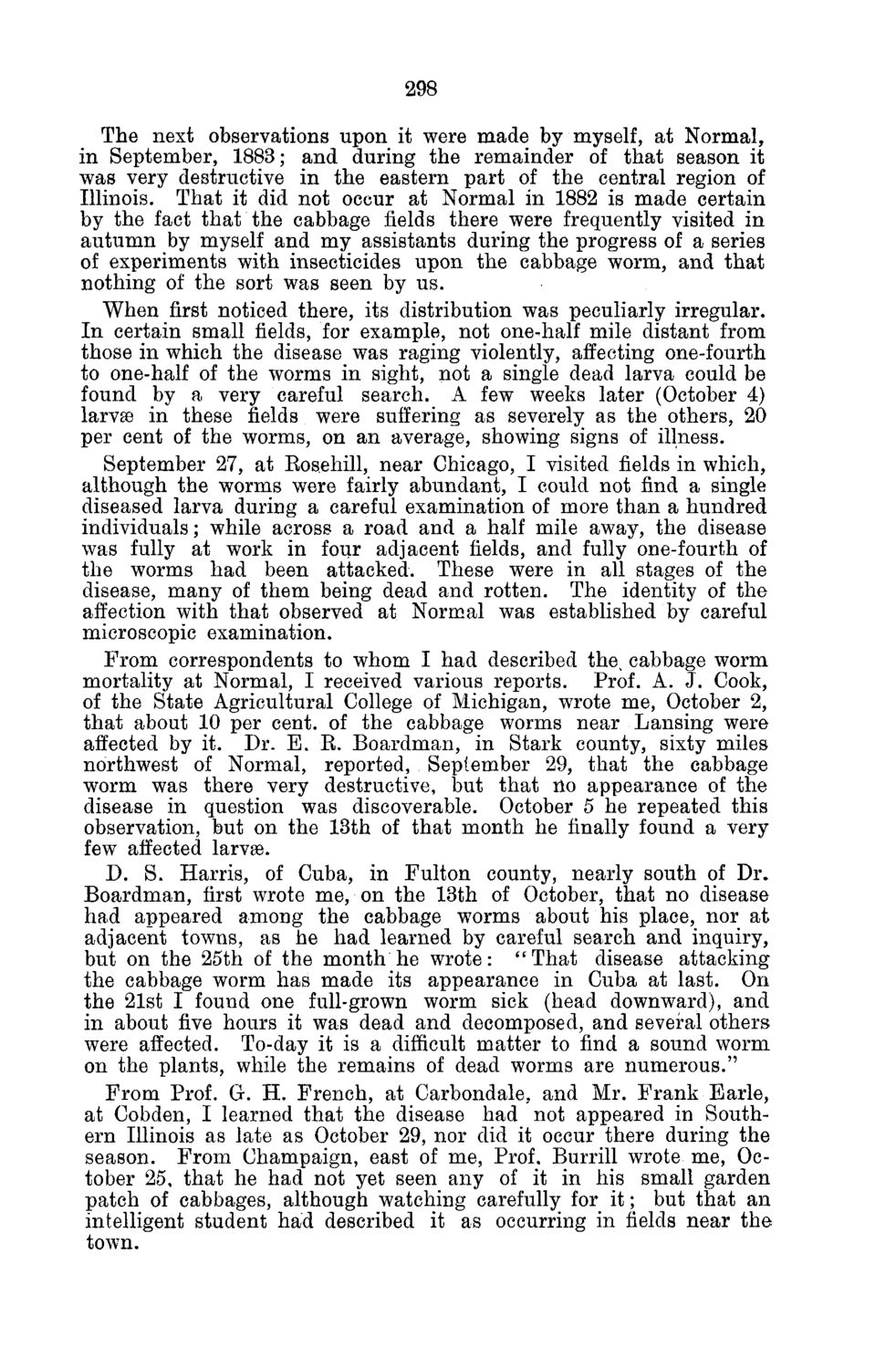| |
| |
Caption: Board of Trustees Minutes - 1886
This is a reduced-resolution page image for fast online browsing.

EXTRACTED TEXT FROM PAGE:
298 The next observations upon it were made by myself, at Normal, in September, 1883; and during the remainder of that season it was very destructive in the eastern part of the central region of Illinois. That it did not occur at Normal in 1882 is made certain by the fact that the cabbage fields there were frequently visited in autumn by myself and my assistants during the progress of a series of experiments with insecticides upon the cabbage worm, and that nothing of the sort was seen by us. When first noticed there, its distribution was peculiarly irregular. In certain small fields, for example, not one-half mile distant from those in which the disease was raging violently, affecting one-fourth to one-half of the worms in sight, not a single dead larva could be found by a very careful search. A few weeks later (October 4) larvae in these fields were suffering as severely as the others, 20 per cent of the worms, on an average, showing signs of illness. September 27, at Eosehill, near Chicago, I visited fields in which, although the worms were fairly abundant, I could not find a single diseased larva during a careful examination of more than a hundred individuals; while across a road and a half mile away, the disease was fully at work in four adjacent fields, and fully one-fourth of the worms had been attacked. These were in all stages of the disease, many of them being dead and rotten. The identity of the affection with that observed at Normal was established by careful microscopic examination. From correspondents to whom I had described the^ cabbage worm mortality at Normal, I received various reports. Prof. A. J. Cook, of the State Agricultural College of Michigan, wrote me, October 2, that about 10 per cent, of the cabbage worms near Lansing were affected by it. Dr. E. K. Boardman, in Stark county, sixty miles northwest of Normal, reported, September 29, that the cabbage worm was there very destructive, but that no appearance of the disease in question was discoverable. October 5 he repeated this observation, but on the 13th of that month he finally found a very few affected larvae. D. S. Harris, of Cuba, in Fulton county, nearly south of Dr. Boardman, first wrote me, on the 13th of October, that no disease had appeared among the cabbage worms about his place, nor at adjacent towns, as he had learned by careful search and inquiry, but on the 25th of the month he wrote: " T h a t disease attacking the cabbage worm has made its appearance in Cuba at last. On the 21st I found one full-grown worm sick (head downward), and in about five hours it was dead and decomposed, and several others were affected. To-day it is a difficult matter to find a sound worm on the plants, while the remains of dead worms are numerous." From Prof. G. H. French, at Carbondale, and Mr. Frank Barle, at Cobden, I learned that the disease had not appeared in Southern Illinois as late as October 29, nor did it occur there during the season. From Champaign, east of me, Prof. Burrill wrote me, October 25, that he had not yet seen any of it in his small garden patch of cabbages, although watching carefully for it; but that an intelligent student had described it as occurring in fields near the town.
| |